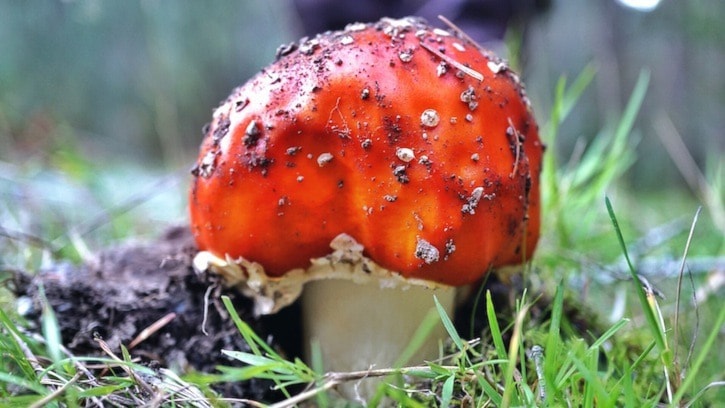Wild and Cultured: Musings from the GreenMan
Disclaimer: this article is meant to provoke insight into the many uses and mysteries of the mushrooms that live among us. It is not an invitation to experiment into the potentially lethal ingestion of some of the mushrooms mentioned. Consult with a experienced guide, and not merely a book or website when attempting to identify species for consumption.
Meaty, medicinal, mystical…maddening mushrooms. The allure of the mushroom in our Southern Vancouver Island rain forest climes captivates our deepest animal impulses. When on the hunt, the crazed ‘mushroom eyes’ kick in—the body becomes enveloped by an extra-sensory perception of sorts. Perhaps it is an invisible whiff of a cloud of spores on the air that alerts us to our moss-concealed cousins of the Fungi Kingdom. Whatever one may call it, this ‘mushroom craze’ may be felt as a benign form of madness.
Then again…maybe not. Some Viking warriors of old would froth into a mad dog frenzy after reportedly consuming a brew of Amanita Muscaria. Storming battlefield in a wild fury, they were deemed invulnerable to attack. Hence the name, “Beserkers”, who would curdle the blood of the all-too-sober enemies of these insane warriors.
On the other hand, this same species of mushroom also divined us the gifts and giver in Old St. Nick, or Santa Claus. This beloved jolly figure resembles the Amanita Muscaria, or ‘Fly Agaric’ mushroom, both of whom are portly, jolly and brightly coloured in red and white. The mushrooms were dried and hung by the stockings near the fire place or on trees as ornaments. This entheogenic (“generating the divine within”) fungi is thought to have given rise to the stories of “flying” reindeer, Christmas trees, magical elves, and chimney sliding in relation to the partaking of the shroom.
Deeper into this history of the ‘Fly Agaric’ we discover the magical worlds of the Siberian shaman who entered states of non-ordinary consciousness in order to promote healing, balance and well being in the community. This ‘sacred madness’ is bound deeply to the power-animal relationship that the shamans had with the reindeer, who incidentally loved to eat the mushrooms as well, leading them to prance and trance about wildly….”On Dasher, on Dancer on Prancer on Vixen!!”
The kindred kind of the Amanita range from the scale of ‘choice edible’ Amanita caesarea, to the not so subtle devastatingly poisonous “Destroying Angel” and “Death Cap.”
“Know thy mushrooms!” a Delphic Oracle once whispered into the ears of an initiate in the hove-trodden woods of Pan and the Greenman. We may as well throw in ‘know thy trees’, as mushrooms are often found in a symbiotic jive with chosen species of their arboreal cousins.
On edibility, the mushroom is often said to have a “meaty” texture and “umami” taste: the taste bud sensation coined by the Japanese which is said to have a pleasant “brothy” or “meaty” taste with an enduring, mouthwatering and coating sensation over the tongue.
Wild mushrooms transcend the tasty but domesticated and monocultured Agaricus bisporus of the grocery store variety. Portobellos are merely oversized versions of this same tame species.
Both the scarcity and wildness of the choice edibles makes them a rare treat to the cultured palate and gut. Gastronomically speaking, Lion’s Mane, Chanterelles, Cauliflower, Porcinis, Oysters, Lobsters and Morels have no equal on the humdrum shelves of the shop. These names may sound arcane to the uninitiated in the savoury flavours of fungi, but to those who have ever been tempted by even a morsel of the above, there is no turning back to the mundane world of white supermarket mushrooms.
The wild chef pursues the delectable edible with reverence and desire. It is this quest for the choice edible that leads the culinary artist to a special kind of madness. When combined with the fanatical devotion of the mushroom hunter, the frenzy gets upped a few more notches.
Next time: How mushrooms may restore health and save the planet. Part 2.
